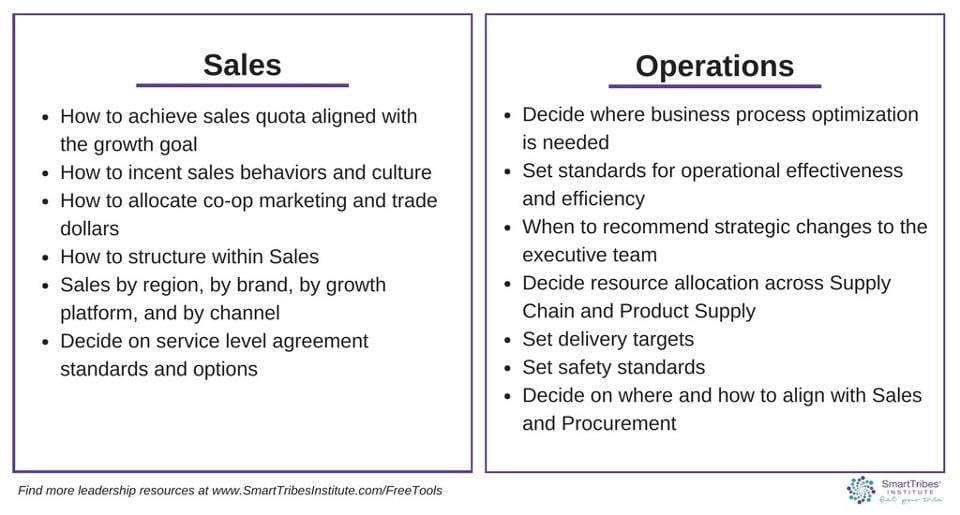
Ready To End Silos, Sabotage And System Dysfunction In Your Organization?
May 16, 2017
Right Person, Wrong Role? Or Wrong Person, Period?
May 26, 2017
*As originally seen on Forbes.com
We all know that setting a strategy matters. It’s one of the first steps to steer your company to achieve its goals and fulfill its mission. So why do strategies so often fail?
Because making strategies work requires execution.
Why Strategies Fail
Strategies fail when the average bear doesn’t know how to execute, and they aren’t empowered to adjust to meet the goals. When strategies stay in the clouds, employees get lost in the woods. Meanwhile, back on Earth, they’re trying to figure out exactly what to do to execute the strategy.
When organizations chunk down their strategic plans into tangible, measurable, specific quarterly goals, their teams know what to do. They can keep moving and course-correct if they get off track.

Two Myths About Effective Execution
In a recent Harvard Business Review (HBR) blog Donald Sull, Rebecca Homkes, and Charles Sull report on their effective strategy execution research. They interviewed 7600 managers in 262 companies across 30 industries to gather their data. Organizations studied in their sample were typically large (6000 employees on average, with median sales of $430 million), and across volatile sectors including financial services, IT, telecommunications, and oil and gas.
The research busted several myths about effective strategy execution. Two of which I find essential to discuss in the context of why strategies fail. I’ll also share two simple tools that will help you put your strategies to work!
Myth # 1: Execution Means Sticking to the Plan
No strategic plan can accurately predict the future. Even if a plan includes detailed roadmaps that specify who should do what, when it should be done by, and what resources are needed. In practice, unforeseen crises or unexpected opportunities can throw plans off.
Leaders must make it safe to adapt to address obstacles and capitalize on opportunities. Because sometimes sticking too rigidly to the plan can run counter to the strategic objectives.
That’s why I find one of the most important activities any organization can undertake is to create the right decision-making spaces when setting accountabilities.
TOOL #1
Decision spaces cover what someone fully owns, and can make autonomous decisions about. So when something unexpected happens, they are empowered to make decisions swiftly, effectively, and in accordance with their competency. Put simply, they don’t need to call on anyone to make the call!
Compiling a list of answers to the following will help you when setting decision spaces:
- What you can make decisions about
- What you can’t make decisions about
- Who to escalate a decision to that is outside of your space

Myth #2: Communication Equals Understanding
It is true that people in the organization need to know exactly what the goal is, why they are doing it, how their department is going to achieve it, how each team member is going to contribute, and what the success metrics are.
However, many executives believe that communications (e.g. emails sent, presentations delivered, etc.) are automatically understood. Not so! Sending out communication pieces does not guarantee they are understood. Just like sharing a lot of words with someone doesn’t guarantee they are heard properly, nor does it mean it will inspire the right actions.
TOOL #2
One of the simplest tools you can use to help staff understand and connect to a strategy is the Outcome Frame (OF). The OF simply helps chunk your strategy down — it brings great clarity as to the “why” and “how” of it, and then you can distribute this clarity to the relevant areas of your organization.
In addition to helping people understand their accountabilities, the OF also emotionally engages the team in the outcome that we hope to achieve from the strategy. This is helps them have their own insights around it — which is key.
Employees must feel connected to the strategy. Human beings make decisions based on emotion, and they will default to activities that lead to the best-feeling. No emotional connection, no engagement. Period.
This doesn’t mean work must be all about joy, happiness, or inspiration.
Here are some of the OF questions I recommend using to elicit detailed responses from people. I’ve provided sample responses for clarity’s sake:
1. What would you like? “I want to double our client retention rates.”
2. What will having that do for you? “I will feel happy, fulfilled, and excited about the work I do — and the team I have! It will also give me more commissions to send my kids to the best colleges, making me a proud parent!”
3. How will you know when you have it (specifically)? “50% of the existing client base I oversee will agree to renewing and extending their contracts with our company for at least another 2 years.”
4. Where, when, with whom do you want this? “At this main office which is responsible for 2 major global markets (U.S. and U.K.), by the mid-year, with my team of four.”
5. What of value might you risk or lose to ensure you achieve this outcome? “I would be willing to let go of clients who are no longer aligned with our mission, vision, and values — so we can focus on those who are. I will overcome my disagreements with Sales and collaborate with them to help identify and secure new client accounts that are better aligned with us. I’d also have to spend more time cultivating my team, so I’d likely lose a few hours of strategic time each week for the first 3 months of this change.”
6. What will likely happen if you don’t solve this the way you want? What will be the impact on your business and life? “Not achieving this outcome would delay funds available for reinvesting in product development. If we don’t fund innovation, we might lose market share to our competitors. Personally, this places financial stress on me as a parent providing for three children at home. Since part of my commission is based on retention metrics.”
7. What are your next steps? “Schedule a meeting with the sales team to define the optimal client profile, meet with marketing on retention programs and outreach to new prospects, set up recurring meetings with my team to mentor them on our new approach, set monthly targets and celebrations as we approach our goal.”
Try these tools to boost the success of your strategies. Then let me know your results!




